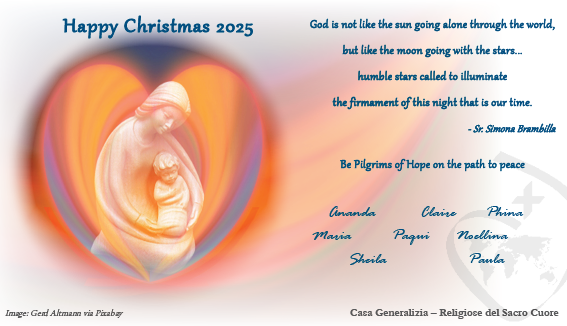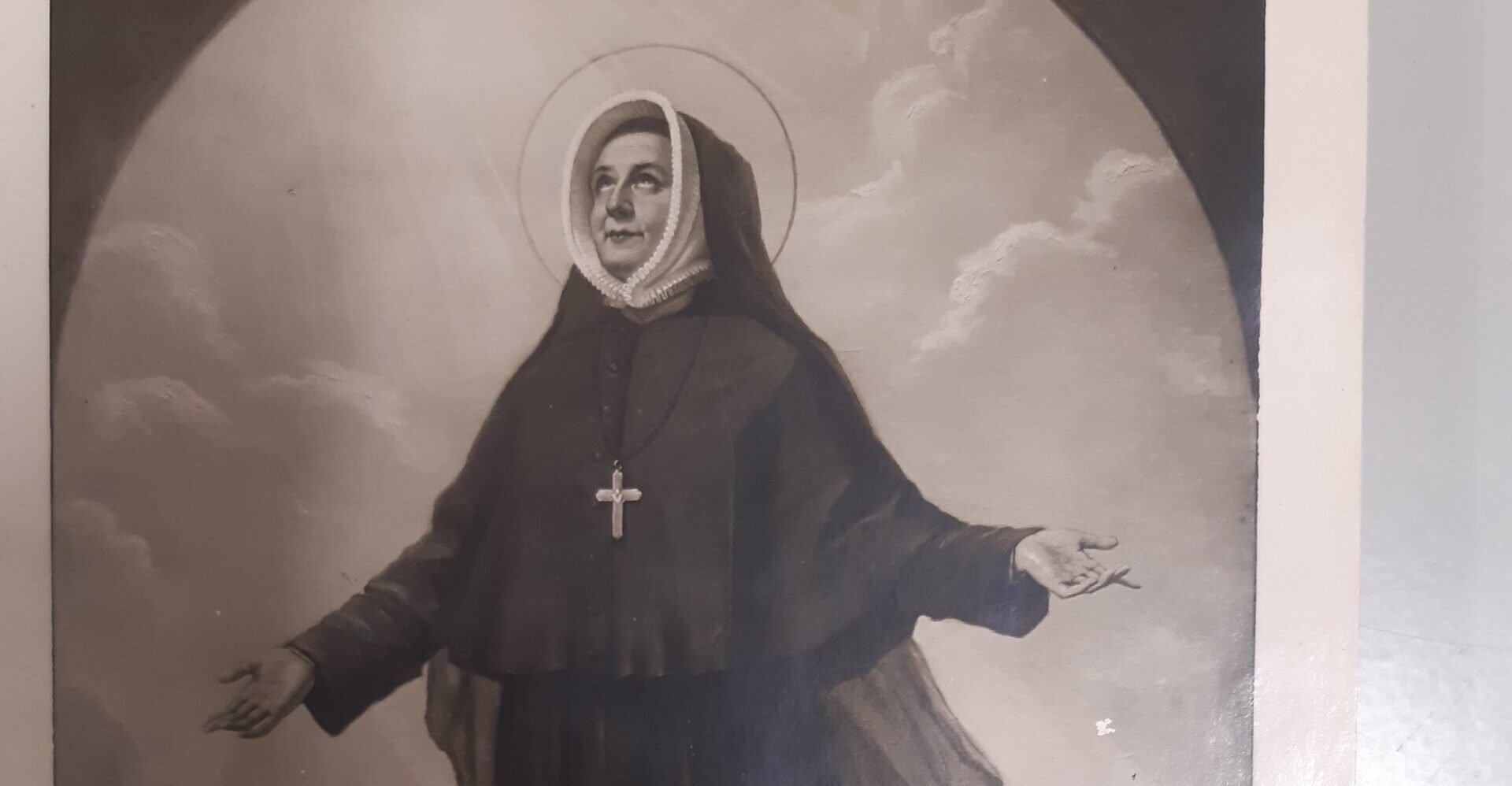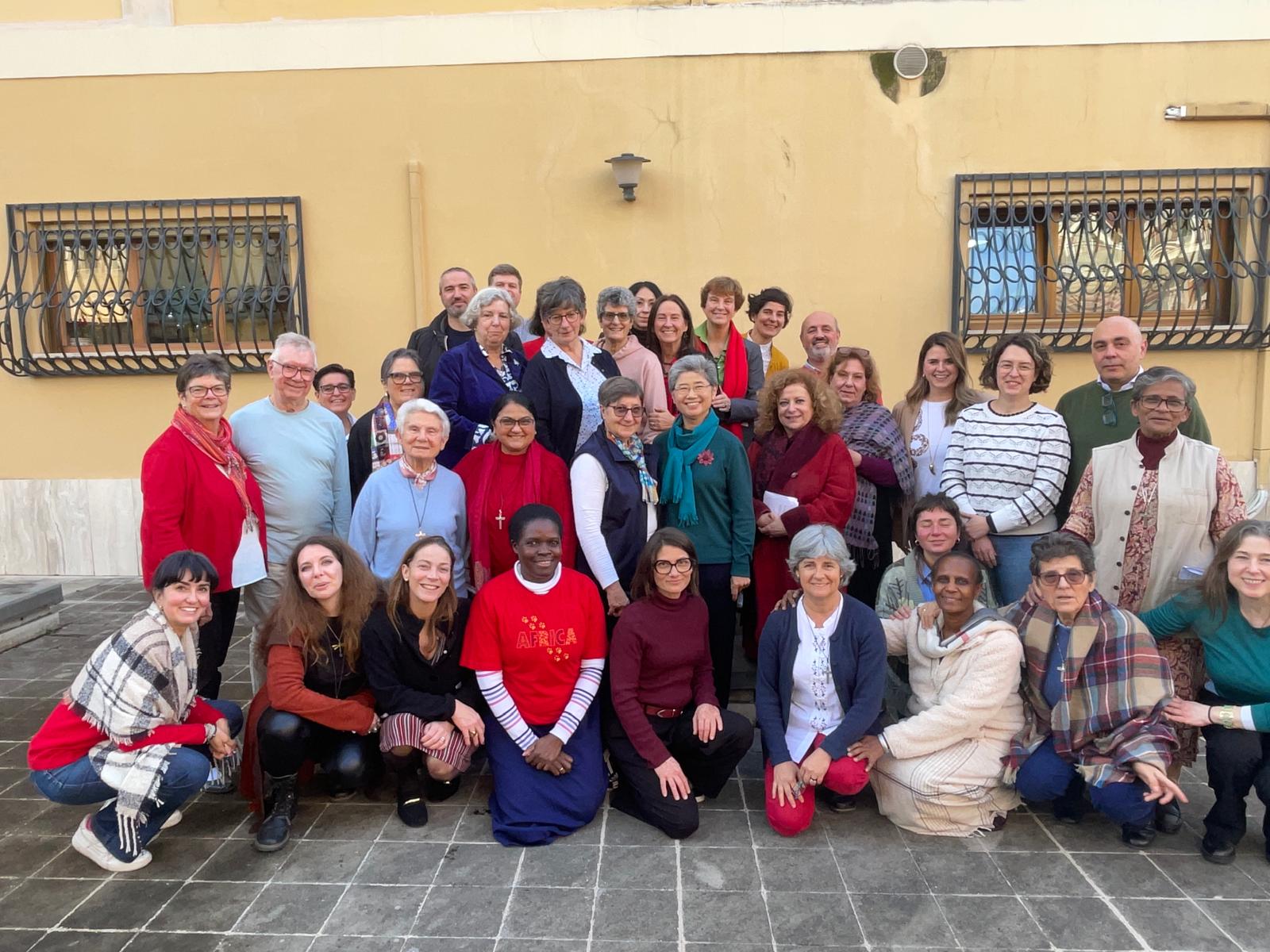On June 4, 1836, St. Madeleine Sophie moved into a new motherhouse in Paris and consecrated it to Our Lady of Sorrows. This is perhaps the first public indication of her deep devotion to Mary under this title. The devotion arose in the 17th century with the Servite Order, and commemorated the “seven sorrows” of Mary: the prophecy of Simeon, the flight into Egypt, the loss of Jesus in the Temple, her encounter with Jesus on the way to Calvary, the death of Jesus, Mary receiving his body from the cross, and the burial of Jesus. The feast of Our Lady of Sorrows had been extended to the entire Roman Catholic Church in 1814, so Sophie would have been very aware of it. The feast was then celebrated on the third Sunday of September. Another feast with the same devotion was commemorated on Friday of Passion Week, only suppressed in 1969 in favor of the September feast. The rosary of the Seven Dolors was a popular devotion.
In 1837, Sophie needed a larger property in Rome and was inspecting the grounds of the Villa Lante, where she found a fresco of Our Lady of Sorrows on an outside wall. This was the determining factor in her decision to buy the huge property, which extended across the entire eastern side of the Janiculum hill. The lower building needed extensive renovations, but the upper Renaissance villino was ready. Here Sophie moved in with the novices in June 1837 until the lower building was ready in 1841. In Sophie’s day the two properties were accessible to each other through lemon and orange groves. Today the upper property, site of the Academy of Finland and the Finnish embassy to the Holy See, also known as the Villa Lante by others, is completely cut off from the lower gardens and house by the large retaining wall built later to hold the Park of the Janiculum. That construction destroyed the original fresco that Sophie had found.
The fateful General Council that provoked what would later be seen as the greatest crisis for the Society opened at the Trinità dei Monti on June 10, 1839, and ended on July 5. The changes it enacted, some greatly needed and others revolutionary, were bound to evoke massive upheaval. Everyone present, especially Sophie, must have known this. On July 12, 1839, she arrived at the Villa Lante with the entire General Council. Together, they went in procession to the fresco. There, she consecrated the Society to Our Lady of Sorrows. Soon after, she decreed that the rosary of the Seven Dolors was to be said by all RSCJ every Friday.
In following years, many houses of the Society were dedicated to Our Lady of Sorrows. Among them during the crisis years 1839-1851 were: New York, later to become Manhattanville, and Montpellier (1841) and Eden Hall (1847); later but still during Sophie’s life, Montreal (1861) and still later Maryville (1872), Avigliana (1889), Newcastle (1904) and Vancouver (1911). The consecration prayer used by Sophie in 1839 was said every year in all houses of the Society well into the 1960s. In 1913 the feast was set in the universal Church on September 15, the day after the Exaltation of the Holy Cross.
The image shown here is thought to resemble the original fresco in the garden of the Villa Lante. It is a very large copy that was commissioned later and executed by the artist Pietro Gagliardi (1809-1890). It hangs today in a large room in the Villa Lante.
In September 1911, Janet Stuart gave one of her first conferences as superior general on Our Lady of Sorrows. In it she wrote: “In the spiritual life the fruit of sorrow is joy. When sorrow falls on the heart that loves God, it is sure to expand in that heart under the sunshine of faith and love, till it finally ripens into joy, whose fruit in turn becomes a seed for eternity.”
In July 1939, the centenary of the consecration was celebrated throughout the Society. The Dolors Chapel at Barat College, among others, was erected to commemorate the occasion.
Section |History
Our Spirituality |The Sacred Heart Spiritual Tradition


